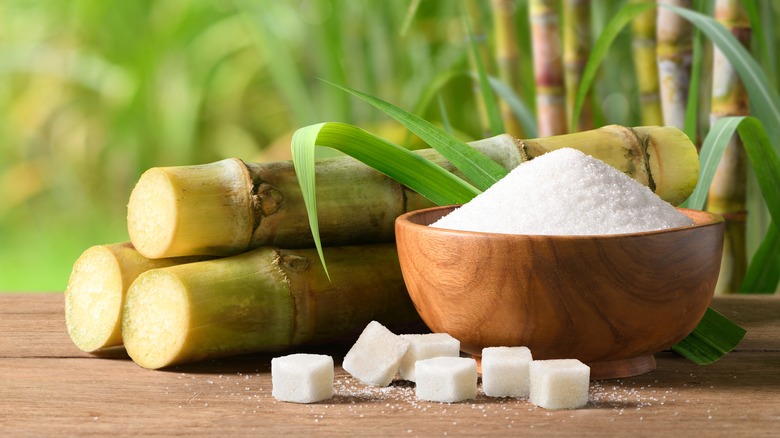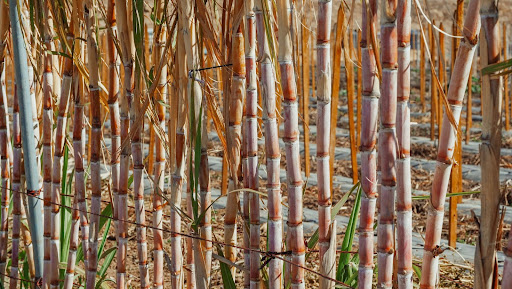Discover the Uses and Advantages of Beet Sugar Vs Cane Sugar in Your Daily Diet Regimen
Discovering the distinct high qualities of beet and cane sugar exposes even more than just their sweetening abilities; it highlights their distinct effect on health and culinary arts. Beet sugar, understood for its subtle flavor, is frequently favored in delicate treats, whereas cane sugar, with its tip of molasses, includes splendor to durable dishes. Each type holds its own dietary profile and glycemic implications, inviting a deeper understanding of their roles in a balanced diet regimen and lasting consumption practices.
Origin and Production Processes of Beet and Cane Sugar

The distinctive environments and dirt types required for growing sugar beets and sugarcane add to differences in their growing methods and geographical circulation, affecting the economics and sustainability of their production. beet sugar vs cane sugar.
Nutritional Contrast Between Beet Sugar and Cane Sugar
In spite of stemming from various plants, beet sugar and cane sugar are nutritionally really comparable, both mainly consisting of sucrose. Each gives regarding 4 calories per gram, translating to about 16 calories per teaspoon. Structurally, both sugars are made up of approximately 99.95% sucrose, with marginal quantities of other materials like moisture and trace element, which do not dramatically change their nutritional profiles.

Inevitably, when picking between beet sugar and cane sugar based on dietary content alone, both deal identical advantages and downsides as they are essentially kinds of the same molecule-- sucrose, providing quick power without other nutrients.
Impact on Health And Wellness: Glycemic Index and Caloric Material
Discovering further into the impacts of beet sugar and cane sugar on wellness, it is important to consider their glycemic index and calorie content. Both sugars are categorized as sucrose, which contains sugar and fructose. This structure leads them to have a similar effect on blood sugar level degrees. The glycemic index (GI) of both beet and cane sugar is around 65, classifying them as high-GI foods, which can create fast spikes in blood sugar degrees. This is a crucial aspect for individuals handling diabetes mellitus or those trying to stabilize their energy levels throughout the day.
Each kind of sugar includes about 4 calories per gram, making their calorie material matching. For those keeping track of caloric consumption, especially when managing weight or metabolic health problems, comprehending this equivalence is essential (beet sugar vs cane sugar). Excessive consumption of any kind of high-calorie, high-GI food can index contribute to health issues such as obesity, heart disease, and insulin resistance.
Environmental and Economic Factors To Consider of Sugar Manufacturing
Beyond wellness influences, the manufacturing of beet and cane sugar additionally raises considerable ecological and financial problems. Sugar beet cultivation has a tendency to need cooler environments and has a lower geographical impact contrasted to sugar cane, which thrives in tropical regions.
Furthermore, making use of chemicals and plant foods in both beet company website and cane sugar farming can bring about dirt destruction and pollution, further influencing biodiversity and neighborhood water bodies (beet sugar vs cane sugar). The selection in between growing sugar beet or cane frequently hinges on neighborhood ecological problems and financial aspects, making the sustainability of sugar production a complicated issue
Culinary Applications and Flavor Differences
While the environmental and economic elements of sugar production are indeed significant, the selection in between beet and cane sugar also influences cooking applications and flavor profiles. Beet sugar, originated from the sugar beet plant, is recognized for its extremely neutral taste. This makes it a versatile ingredient in cooking, where it does not change the taste of various other components. It dissolves promptly and is suitable for use in cakes, cookies, and pastries.
Walking cane sugar, removed from sugarcane, often keeps molasses traces, which present a distinctive richness and deepness. The small variant in wetness content in between beet and cane sugar can influence the appearance and consistency of meals, making cane sugar a preferred choice for particular dishes that benefit from its unique like this residential properties.

Conclusion
In conclusion, both beet and cane sugar have distinct beginnings and manufacturing processes, providing similar dietary accounts with minor differences in sodium material and taste. While their effect on health and wellness, especially concerning glycemic index and calories, is comparable, the choice in between them commonly boils down to environmental, financial factors, and specific cooking requirements. Comprehending these aspects can guide customers in making notified decisions that straighten with their health and wellness goals and flavor choices.
Comments on “Examining beet sugar vs cane sugar reveals distinctions in economic factors and market supply.”